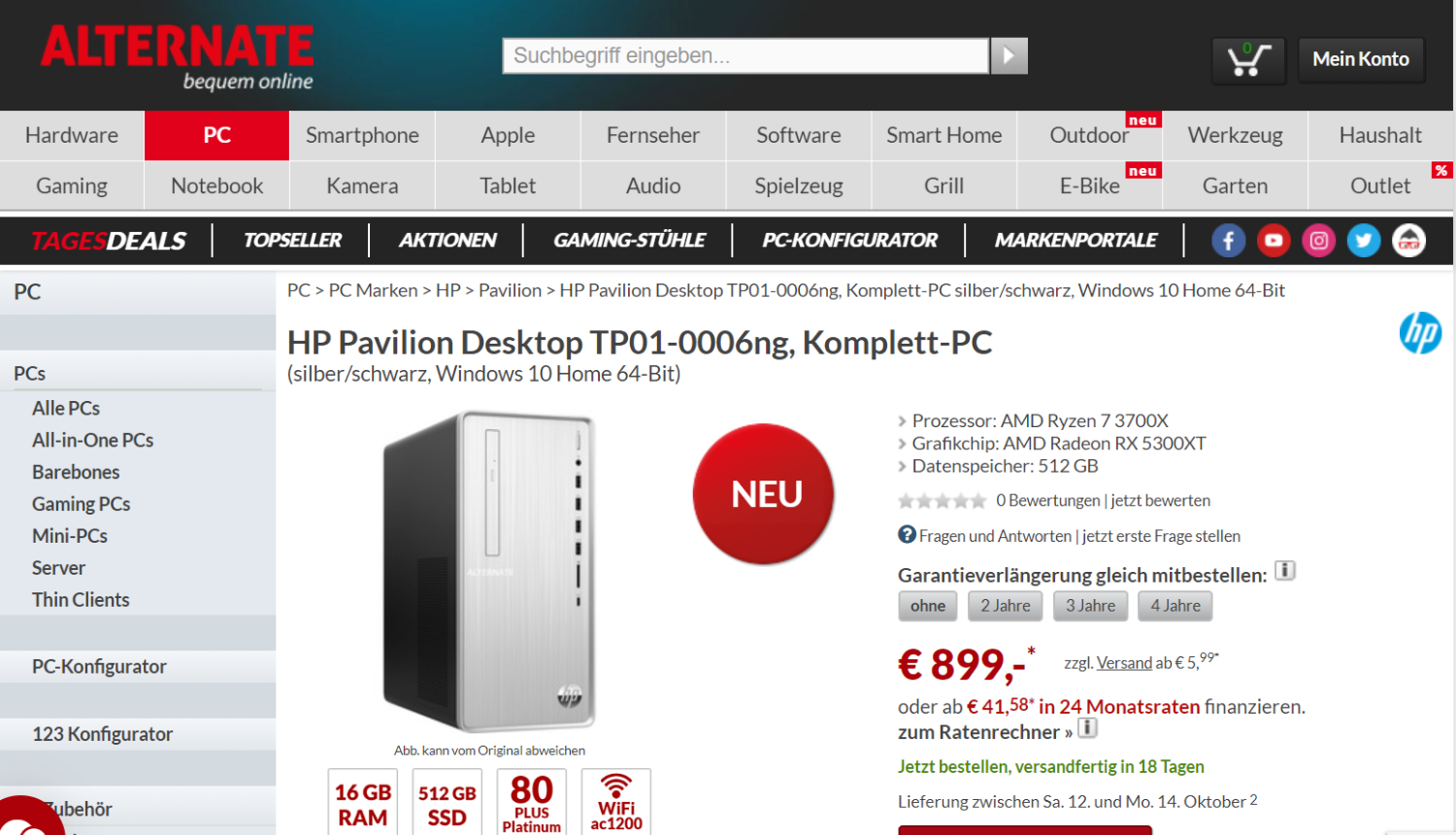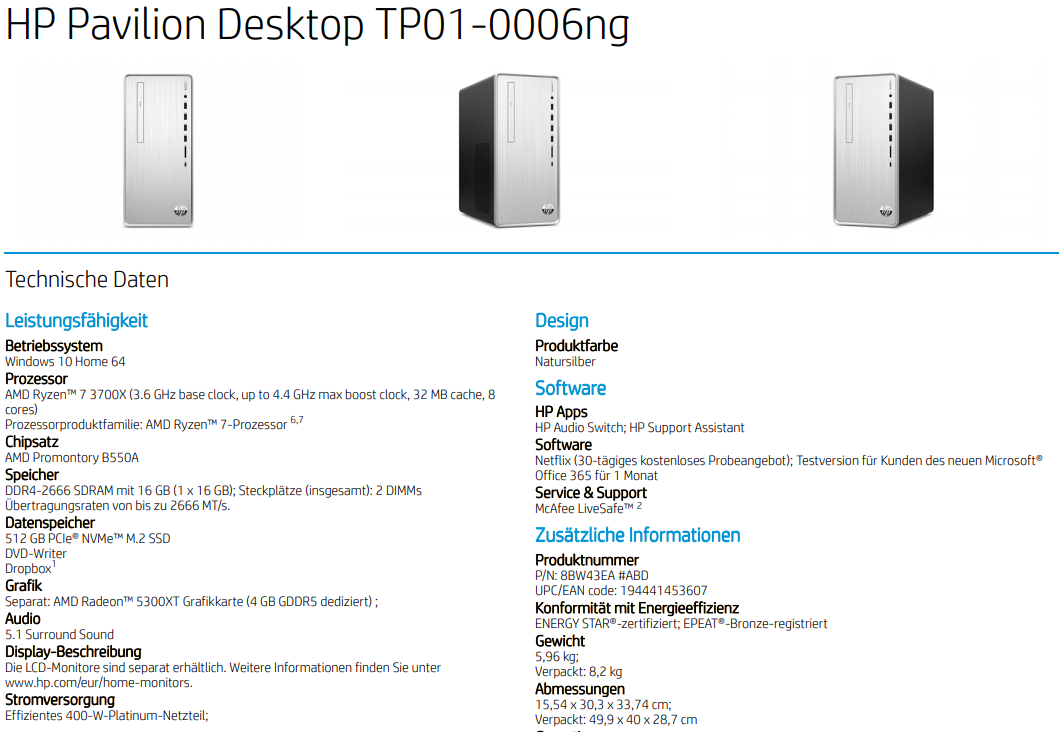HP has revealed the Pavilion Desktop TP01-0006ng and Desktop M01-F0017ng -- both of which seemingly use AMD's upcoming B550 chipset. The listings also include the first mention we've seen of a new AMD gaming graphics card, the AMD Radeon RX 5300 XT.

The B550 chipset, which is refered to as "AMD Promontory B550A" in both HP documents, will serve as the mid-range chipset for AMD's Ryzen 3000-series processors. ASMedia is responsible for producing the B550 chipset for AMD. The B550 chipset is rumored to lack PCIe 4.0 support, which should help drive down manufacturing costs, however, there isn't enough evidence to confirm that. It's possible that the B550 chipset could use PCIe 4.0 on the first PCIe x16 slot and primary M.2 port. We'll just have to wait to find out.

German retailer Alternate has listed the Pavilion Desktop TP01-0006ng and Desktop M01-F0017ng with arrival dates of October 12 and October 8, respectively. It would seem that the B550 chipset could debut in next month, at least through OEM systems.
But for PC builders, at this point, it's uncertain whether B550 motherboards are even ready yet. In June, DigiTimes reported that ASMedia would ship out B550 orders in the fourth quarter of this year. If that's correct, it's unlikely that motherboard vendors will launch B550-based products in October.

The only information that HP provided about the Radeon RX 5300 XT is that it will supposedly feature 4GB of GDDR5 memory. There were talks that AMD was working on smaller Navi silicon, Navi 12 and Navi 14. However, we've never seen any mentions of a Radeon RX 5300 series until today. It's also impossible to tell if the Radeon RX 5300 series will be based on the Navi microarchitecture. Given the choice of GDDR5 memory, the Radeon RX 5300 series seems closer to another Polaris rebrand. However, this wouldn't match earlier Radeon RX 5000-series lines. We're more inclined to think that the Radeon RX 5300 series is indeed low-end Navi, but only time will tell.
Stay On the Cutting Edge: Get the Tom's Hardware Newsletter
Get Tom's Hardware's best news and in-depth reviews, straight to your inbox.

Zhiye Liu is a news editor and memory reviewer at Tom’s Hardware. Although he loves everything that’s hardware, he has a soft spot for CPUs, GPUs, and RAM.
-
alextheblue ReplyIt's possible that the B550 chipset could use PCIe 4.0 on the first PCIe x16 slot and primary M.2 port.
Those actually have nothing to do with the chipset itself. They are directly connected to the CPU, which means you could even implement PCIe 4.0 (for those direct connections) on a 400 series board, if you designed the board with 4.0 in mind. You could even split the x16 across multiple slots. Heck we even had some beta BIOS versions with PCIe 4.0 on some older 400 series boards... ultimately that was axed as signal integrity on existing designs delivered questionable results.
So, what could B550 improve on vs B450/X470, if it doesn't use a full PCIe 4.0 setup like X570? A PCIe 4.0 link between the CPU and the chipset would be the bare minimum, IMHO. The connected lanes would have access to potentially double the overall bandwidth (in aggregate) vs a 3.0 link. I also wouldn't rule out a purpose-built lower-cost fully PCIe 4.0 chipset. Remember the X570 is essentially a repurposed I/O die, a firm like ASMedia could very well build something more specialized that has roughly the same functionality in a smaller (cheaper) die. Actual performance may be a little lower, but anything would be an upgrade over the older 400 ASMedia designs.